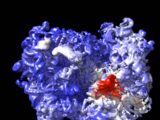
50 common questions asked in bioinformatics
December 18, 2023What is bioinformatics?
Bioinformatics is an interdisciplinary field that combines biology, computer science, and information technology to analyze and interpret biological data. It involves the development and application of computational methods to process, analyze, and interpret biological information, particularly data from genomics, proteomics, and other high-throughput technologies.
What is computational biology?
Computational biology is a branch of biology that uses computational and mathematical approaches to model and analyze biological systems. It involves the development and application of algorithms, statistical methods, and computational models to understand biological processes, predict outcomes, and gain insights from large-scale biological data.
What are the different kinds of DNA sequences?
DNA sequences can be classified into coding and non-coding regions. Coding regions include genes that encode proteins, while non-coding regions may include regulatory elements, introns, and intergenic regions. Other classifications include mitochondrial DNA, chloroplast DNA, and different types of repetitive sequences.
How do you determine the homology of DNA sequences?
Homology of DNA sequences is determined by comparing their nucleotide or amino acid sequences. This is typically done using sequence alignment methods, where similarities and differences between sequences are identified. High sequence similarity suggests a common evolutionary origin or functional relationship.
What is genomics?
Genomics is the study of the entire set of genes and genetic material (genome) in an organism. It involves the analysis of genes, their functions, interactions, and variations on a genome-wide scale.
What is proteomics?
Proteomics is the study of the entire set of proteins in a biological system. It involves the identification, quantification, and functional analysis of proteins to understand cellular processes.
What is transcriptomics?
Transcriptomics is the study of the complete set of RNA transcripts (transcriptome) produced by a cell, tissue, or organism. It provides insights into gene expression patterns and regulation.
What is metabolomics?
Metabolomics is the study of the complete set of small molecules (metabolites) present in a biological sample. It aims to understand the metabolic pathways and changes associated with physiological or pathological conditions.
What is systems biology?
Systems biology is an interdisciplinary approach that integrates biological data from various levels (genomics, transcriptomics, proteomics, etc.) to model and understand complex biological systems as a whole.
What is the Human Genome Project?
The Human Genome Project was an international research initiative aimed at mapping and sequencing the entire human genome. It was completed in 2003 and provided a comprehensive reference for human genetic information.
What is BLAST?
BLAST (Basic Local Alignment Search Tool) is a widely used bioinformatics algorithm for comparing and aligning biological sequences, such as DNA, RNA, or protein sequences, to identify sequence similarities and potential homologous relationships.
What is sequence alignment?
Sequence alignment is the process of arranging two or more biological sequences to identify similarities and differences. It helps in understanding evolutionary relationships and functional similarities between sequences.
What is gene finding?
Gene finding involves predicting the location and structure of genes within a DNA sequence. This computational process helps identify coding regions and understand the genetic makeup of an organism.
What is gene expression?
Gene expression refers to the process by which information from a gene is used to synthesize a functional gene product, such as a protein or RNA. It can be studied at the level of transcription and translation.
What is phylogenetics?
Phylogenetics is the study of evolutionary relationships among organisms. It involves the construction of phylogenetic trees based on genetic data to understand the common ancestry and divergence of species.
What is molecular modeling?
Molecular modeling is the use of computational techniques to simulate and analyze the structure and behavior of molecules. It is widely used in drug discovery, protein structure prediction, and understanding molecular interactions.
What is protein structure prediction?
Protein structure prediction involves using computational methods to predict the three-dimensional structure of a protein based on its amino acid sequence. This is crucial for understanding protein function and designing drugs.
What is network analysis?
Network analysis involves the study of biological systems as networks, where nodes represent biological entities (e.g., genes or proteins) and edges represent interactions between them. It helps uncover patterns and relationships in complex biological data.
What is pathway analysis?
Pathway analysis involves the study of biological pathways, which are sequences of molecular interactions that lead to a specific biological outcome. It helps understand the interconnectedness of biological processes.
What is machine learning?
Machine learning is a field of artificial intelligence (AI) that focuses on developing algorithms and models that enable computers to learn and make predictions or decisions without being explicitly programmed. In bioinformatics, it is used for data analysis and pattern recognition.
What is deep learning?
Deep learning is a subset of machine learning that involves neural networks with multiple layers (deep neural networks). It has been successful in tasks such as image and speech recognition and is applied in bioinformatics for complex data analysis.
What is artificial intelligence?
Artificial intelligence (AI) refers to the development of computer systems that can perform tasks that typically require human intelligence, such as problem-solving, learning, and decision-making. In bioinformatics, AI is used for data analysis and prediction.
What is big data?
Big data refers to large and complex datasets that cannot be easily processed using traditional data processing methods. In bioinformatics, big data often comes from high-throughput technologies, such as genomics and proteomics.
What is data mining?
Data mining involves the discovery of patterns, trends, and knowledge from large datasets. In bioinformatics, it is used to extract valuable information from biological data.
What is data visualization?
Data visualization is the representation of data in graphical or visual formats to facilitate understanding and interpretation. It is essential in bioinformatics for conveying complex biological information.
What is statistical analysis?
Statistical analysis involves the application of statistical methods to analyze and interpret data. In bioinformatics, it is used to identify significant patterns, correlations, and relationships in biological datasets.
What is hypothesis testing?
Hypothesis testing is a statistical method used to evaluate a hypothesis by assessing the probability of obtaining observed results by chance. It is a fundamental tool in drawing conclusions from data.
What is Bayesian inference?
Bayesian inference is a statistical method based on Bayesian probability theory. It involves updating probability estimates based on new evidence and prior knowledge, making it useful for analyzing complex biological data.
What is maximum likelihood estimation?
Maximum likelihood estimation is a statistical method used to estimate the parameters of a model by maximizing the likelihood of the observed data. It is commonly used in bioinformatics for parameter estimation in various models.
What is clustering?
Clustering is a method in bioinformatics used to group similar data points together based on certain criteria. In genomics, it can be applied to group genes with similar expression patterns.
What is classification?
Classification is a machine learning technique that involves categorizing data into predefined classes or labels based on its features. In bioinformatics, classification can be used to predict the functional class of genes or proteins based on their characteristics.
What is regression?
Regression is a statistical method used to model the relationship between a dependent variable and one or more independent variables. In bioinformatics, regression analysis can be employed to predict quantitative outcomes, such as gene expression levels.
What is dimensionality reduction?
Dimensionality reduction is a technique used to reduce the number of features or variables in a dataset while retaining essential information. It is applied in bioinformatics to simplify complex datasets and improve the efficiency of analysis.
What is feature selection?
Feature selection involves choosing a subset of relevant features from a larger set of variables. In bioinformatics, feature selection is crucial for identifying the most informative genes or proteins in a dataset.
What is cross-validation?
Cross-validation is a validation technique used to assess the performance of a predictive model by splitting the dataset into multiple subsets. It helps ensure the model’s generalizability and reliability by testing it on different data partitions.
What is overfitting?
Overfitting occurs when a machine learning model is too complex and fits the training data too closely, leading to poor generalization to new, unseen data. It is a common challenge in bioinformatics model development.
What is underfitting?
Underfitting occurs when a machine learning model is too simple to capture the underlying patterns in the data, resulting in poor performance on both training and test datasets. Balancing model complexity is crucial to avoid underfitting.
What is regularization?
Regularization is a technique used in machine learning to prevent overfitting by adding a penalty term to the model’s objective function. It helps control the complexity of the model and improves its generalization performance.
What is ensemble learning?
Ensemble learning involves combining the predictions of multiple models to improve overall performance. In bioinformatics, ensemble methods, such as random forests, are used to enhance the accuracy and robustness of predictive models.
What is transfer learning?
Transfer learning is a machine learning approach where knowledge gained from one task is applied to improve the performance of a related task. It can be useful in bioinformatics when pre-trained models are adapted for specific biological datasets.
What is unsupervised learning?
Unsupervised learning is a type of machine learning where the algorithm learns patterns and relationships in the data without explicit labels. Clustering and dimensionality reduction are common unsupervised learning techniques in bioinformatics.
What is supervised learning?
Supervised learning involves training a model on a labeled dataset, where the algorithm learns the mapping between input features and corresponding output labels. It is widely used in bioinformatics for predictive modeling.
What is reinforcement learning?
Reinforcement learning is a type of machine learning where an agent learns to make decisions by interacting with an environment and receiving feedback in the form of rewards or penalties. It is applied in bioinformatics for optimizing experimental designs and decision-making.
What is deep reinforcement learning?
Deep reinforcement learning combines deep learning techniques with reinforcement learning principles. It involves training neural networks to make decisions in complex environments and is applicable in bioinformatics for tasks such as drug discovery and optimization.
What is natural language processing?
Natural language processing (NLP) involves the use of computational methods to understand and analyze human language. In bioinformatics, NLP can be applied to extract information from scientific literature and textual data.
What is image processing?
Image processing in bioinformatics involves the analysis and manipulation of biological images, such as microscopy images of cells or tissues. It includes techniques for image enhancement, segmentation, and feature extraction.
What is signal processing?
Signal processing in bioinformatics deals with the analysis and interpretation of signals, such as those generated by microarrays or sensors. It includes methods for filtering, transforming, and extracting relevant information from biological signals.
What is time series analysis?
Time series analysis involves studying data points collected over time to identify patterns, trends, and temporal relationships. In bioinformatics, time series analysis can be applied to study gene expression dynamics or other time-dependent biological processes.
What is single-cell analysis?
Single-cell analysis involves studying the characteristics of individual cells rather than populations. It is used in bioinformatics to explore cellular heterogeneity and understand cell-to-cell variation in gene expression, genomics, and other omics data.
What is multi-omics integration?
Multi-omics integration involves integrating data from multiple omics layers (genomics, transcriptomics, proteomics, metabolomics, etc.) to gain a more comprehensive understanding of biological systems. It helps uncover complex interactions and relationships across different biological levels.Ensemble learning in bioinformatics


















